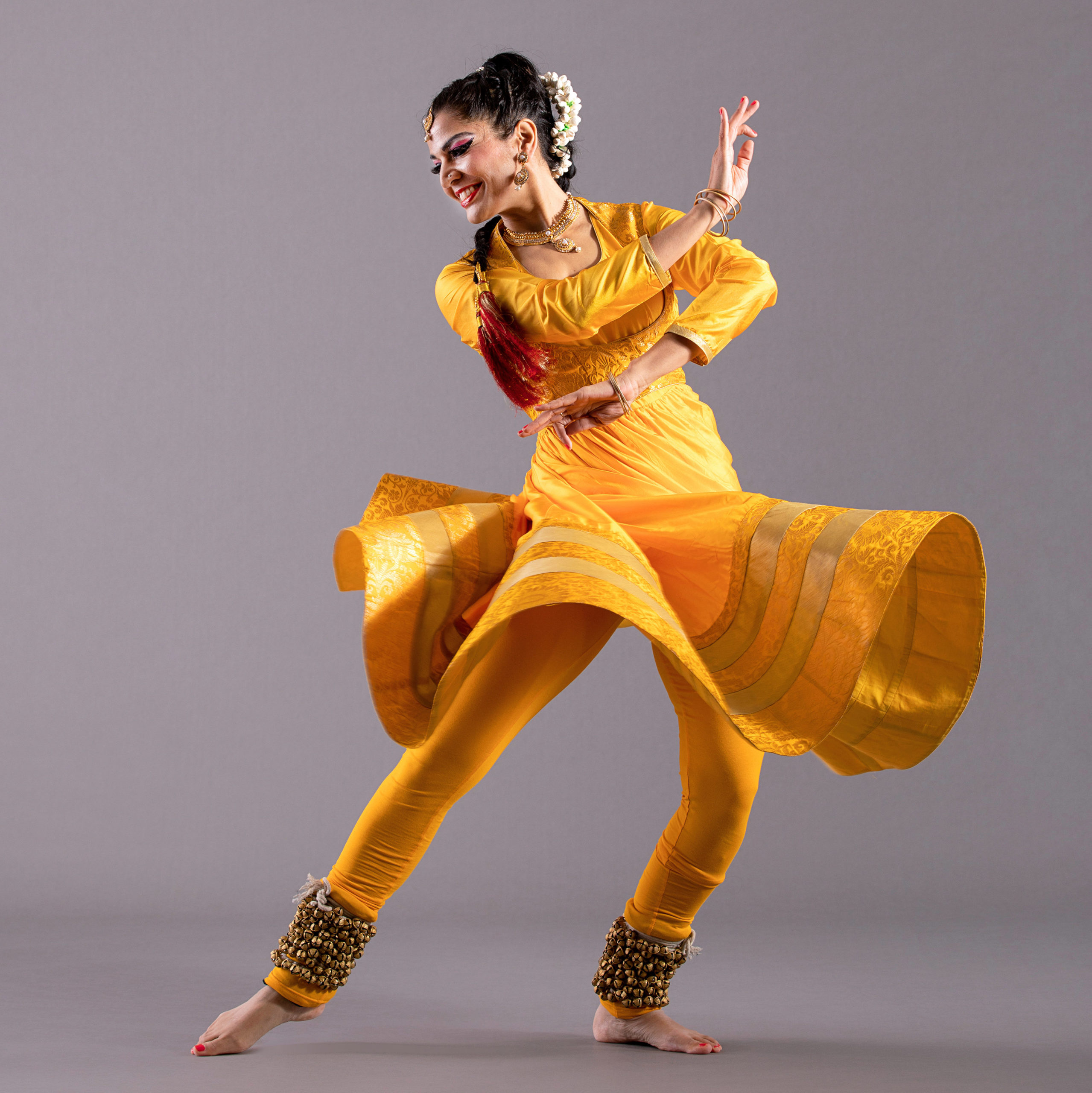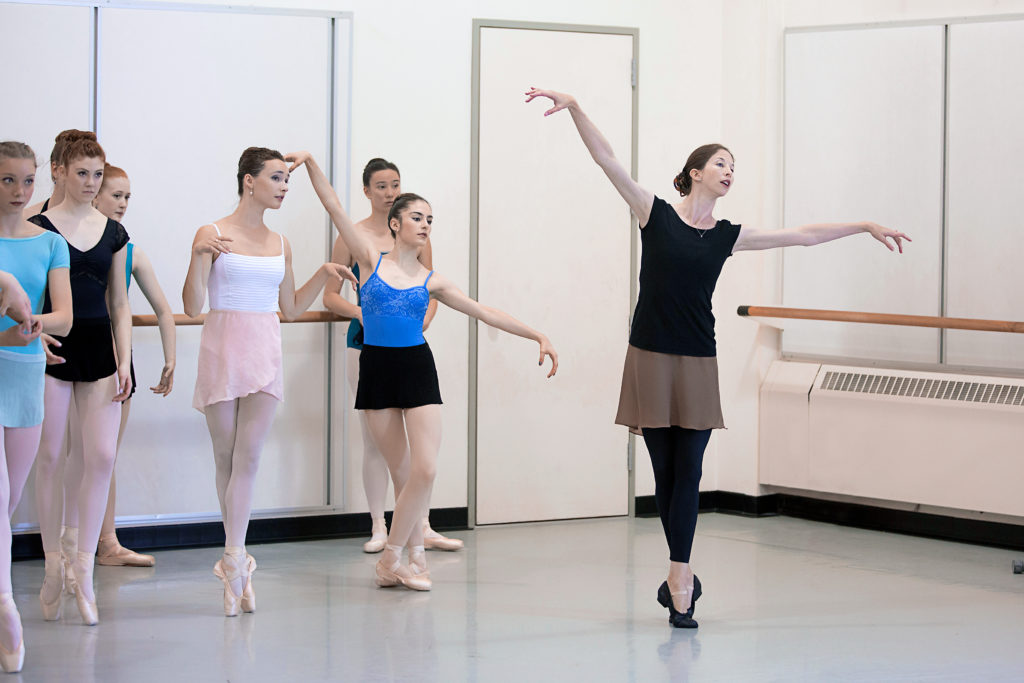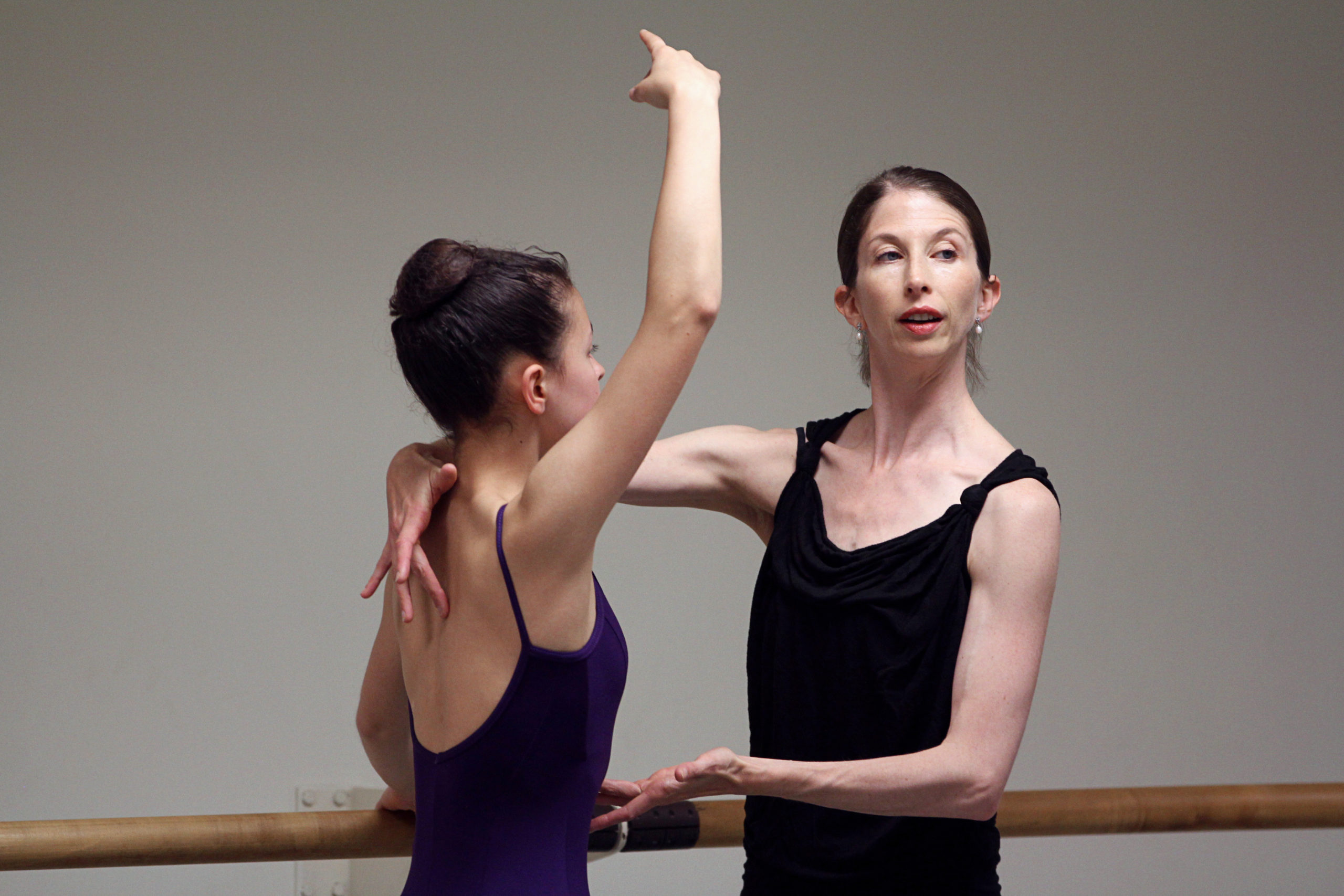Spotting Tips for More Efficient, Virtuosic Turns
Most dancers are taught to spot primarily to avoid dizziness during turns. But in aerial dance, the stakes are higher, says Joshua Dean, co-founder of Aerial Arts NYC: Aerialists often spot the floor or the ceiling, and without a proper spot, they could fall from a dangerous height. In kathak, too, where dancers may perform 100 or more turns on their heels in succession, spotting is essential and impossible to fake, says New York City–based dancer and teacher Rachna Nivas.
But whether you’re doing hundreds of turns or just one, spotting does much more than stave off dizziness: Your spot is your turn’s engine, and it can even be a tool for connecting with the audience and adding drama.
Really Look

In theory, spotting is simple: The head should be the last part of the body to turn, holding the gaze to the front as long as possible, and the first to arrive again at the front. This concept is often introduced to beginners by asking them to look at their own face in the mirror, or by placing a mark on the wall or mirror to focus on during turns.
Nivas has another suggestion that emphasizes not just whipping the head around, but really focusing the eyes after each revolution: When she was learning to spot, she’d write a phrase on a large piece of paper and read it every time she spotted. “If it was getting blurry, I knew I was losing the focus of my spot,” she says.
In aerial dance, actively looking as you spot is a necessity, says Dean, as a performer may use their spot to keep track of where they are in space, measuring their distance from the ground with each revolution so they don’t crash into it. “A lot of times we’re spotting because we’re grabbing something,” such as a silk, says Dean. “So you’re looking at it and you have to catch it. And if you don’t catch it, you’re not just going to stumble out of your turn—you’re going to hit the ground rather hard.”
Let Your Spot Lead
Dana Hanson, a faculty member at Pacific Northwest Ballet School, tells students to think of a double pirouette as “a passé relevé with two spots.” The spot should anchor the turn, she says: “It should feel like it’s the spot that’s making it happen, and not a lot of force.”
This means keeping your weight forward as you prepare—being too far back can create tension in the neck, which makes spotting more difficult. Keeping your spot even and rhythmic is also key: Hanson often sees dancers over-anticipating their turns by taking off on the “and” instead of on count 1. “It should almost feel like you’re going to be late,” she says.
Especially when turning on pointe, “when there’s no friction,” says Hanson, “you have to create some kind of solidity, and that’s the spot. The momentum from the turn comes from the force of taking off and the timing of the head.”
Be Fearless
There’s an element of fear that can come with spotting, points out Nivas. “Your nervous system is like, ‘What are you doing?’ ” she says. A solid spot requires an “unapologetic focus,” she says, which may be challenging for dancers used to wandering around the studio with their eyes, looking for guidance or reassurance. “If you’re trying to turn and you’re looking at me for approval, you’re not spotting,” she says. The temptation is heightened in aerial dance: Dean says that nervous beginners often glance at the ground instead of looking where they need to spot.
Getting over this fear, and approaching your spot with a sense of “belief in yourself,” as Nivas puts it, will help you with more than just more-efficient turns: Hanson sees it as a way of creating a sense of connection and conversation with the audience, and of “making the movement read really clearly to the front.”
A brisk spot can also add drama and excitement: “A double pirouette can be a virtuoso turn if it looks like it comes out of nowhere,” says Hanson, “and the spot is an important part of that.” For example, when the preparation for the turn is towards the corner, but the dancer, seemingly all of a sudden, is spotting front, “the spot creates that illusion of ‘How did they get from that to that?’ ” Hanson says.

The Power of Spotting
Spotting may seem like a hyper-specific skill that’s useful only with turning. But both Nivas and Hanson argue that investing in your spot can enhance your dancing even when you’re not mid-revolution.
Hanson says that learning to spot helps dancers develop their focus overall, which is key when choreography requires quick directional changes. Spotting can also teach dancers to strike a balance between filtering out distractions and maintaining awareness of what’s around them, says Nivas. After all, “If you’re seeing something at the back of the room, you’re not spotting,” she says, but you also need to ensure you’re not going to run into someone or drift into an unsafe area of the studio or stage.
“There’s such a level of control you end up having when you’re a really good spotter, even if you’re not turning,” says Nivas, who sees spotting as a spiritual practice, “because spotting teaches you that piercing focus. It’s so internal and so individual—it’s truly you owning your own body.”




